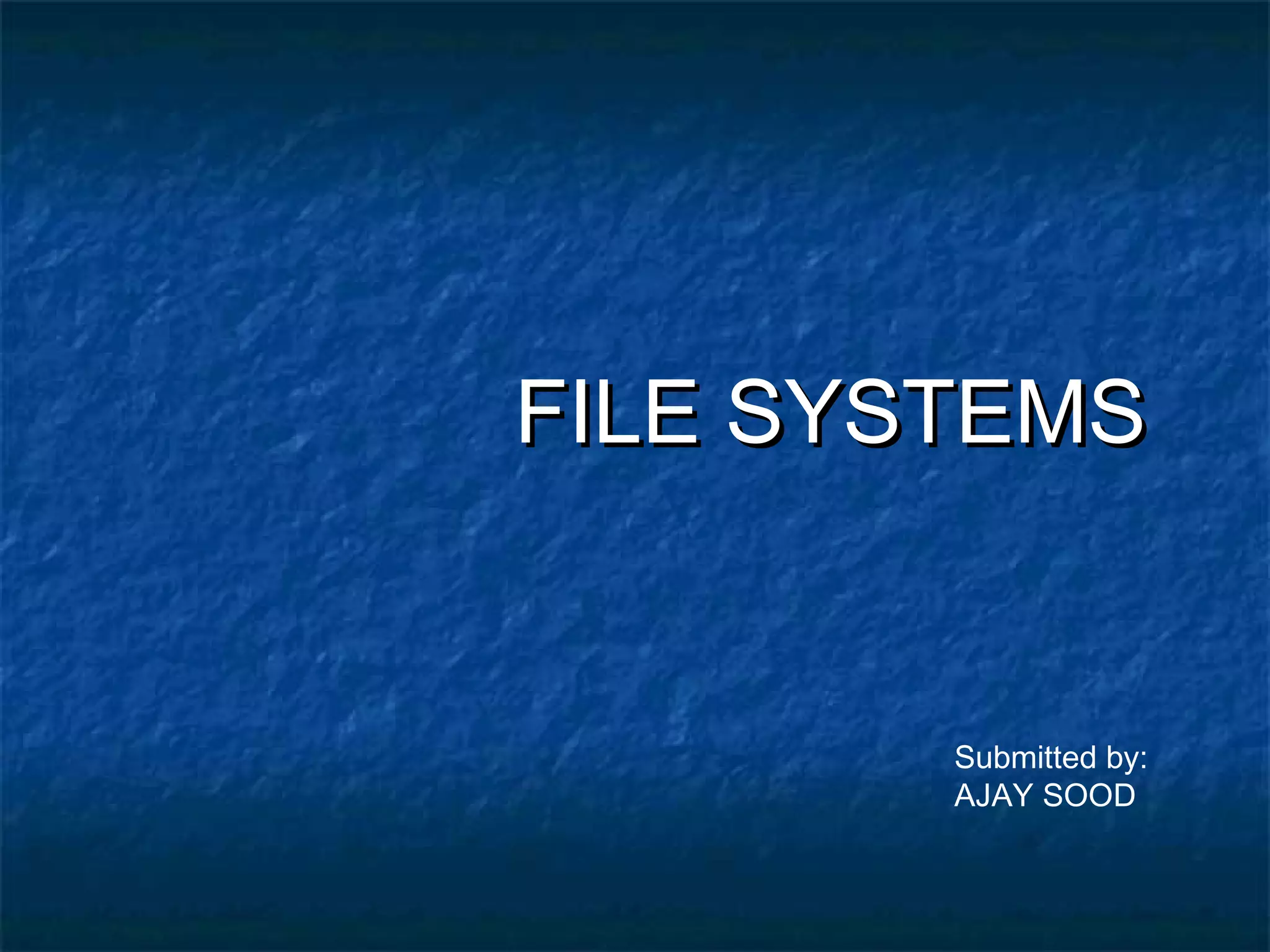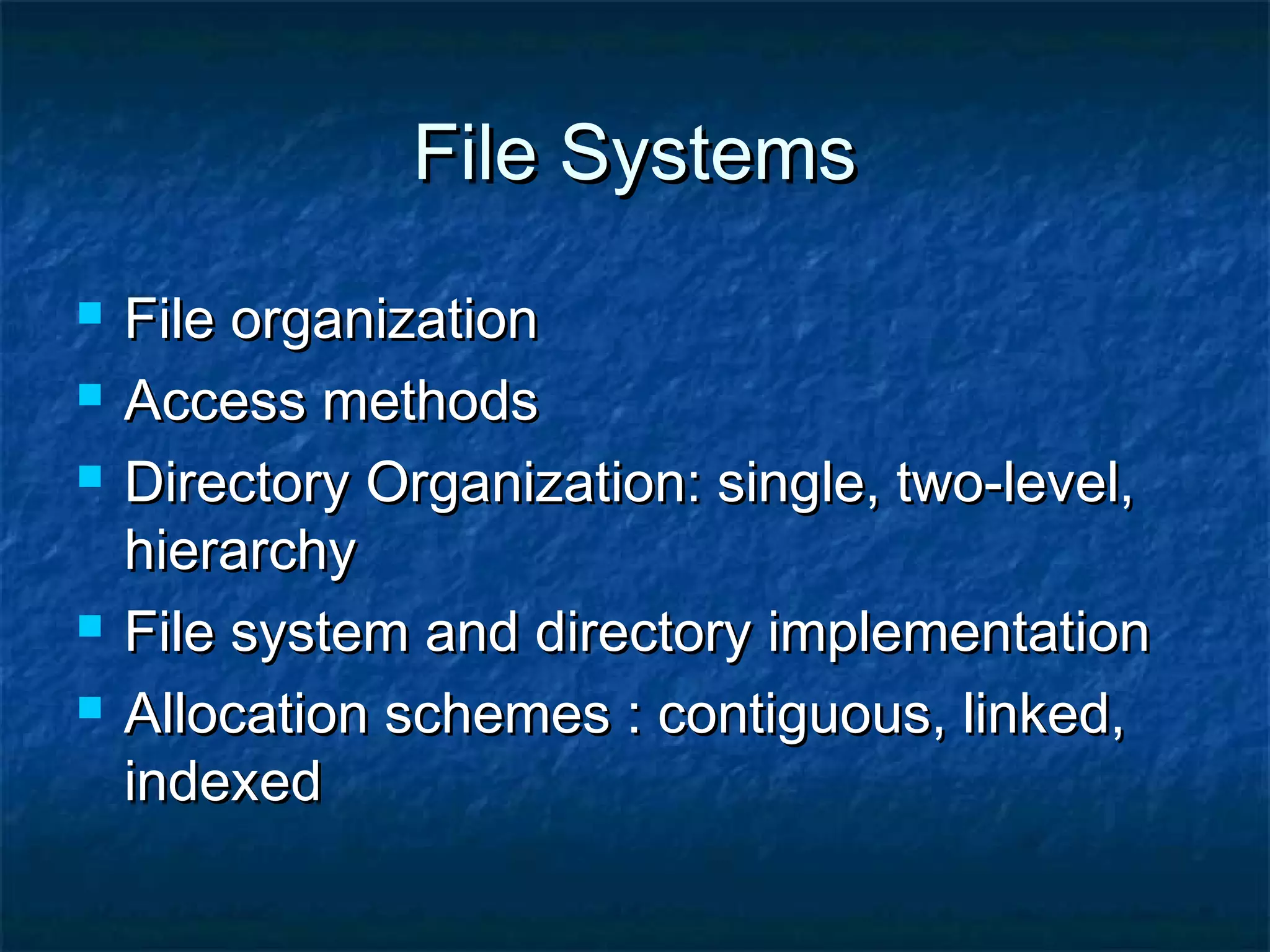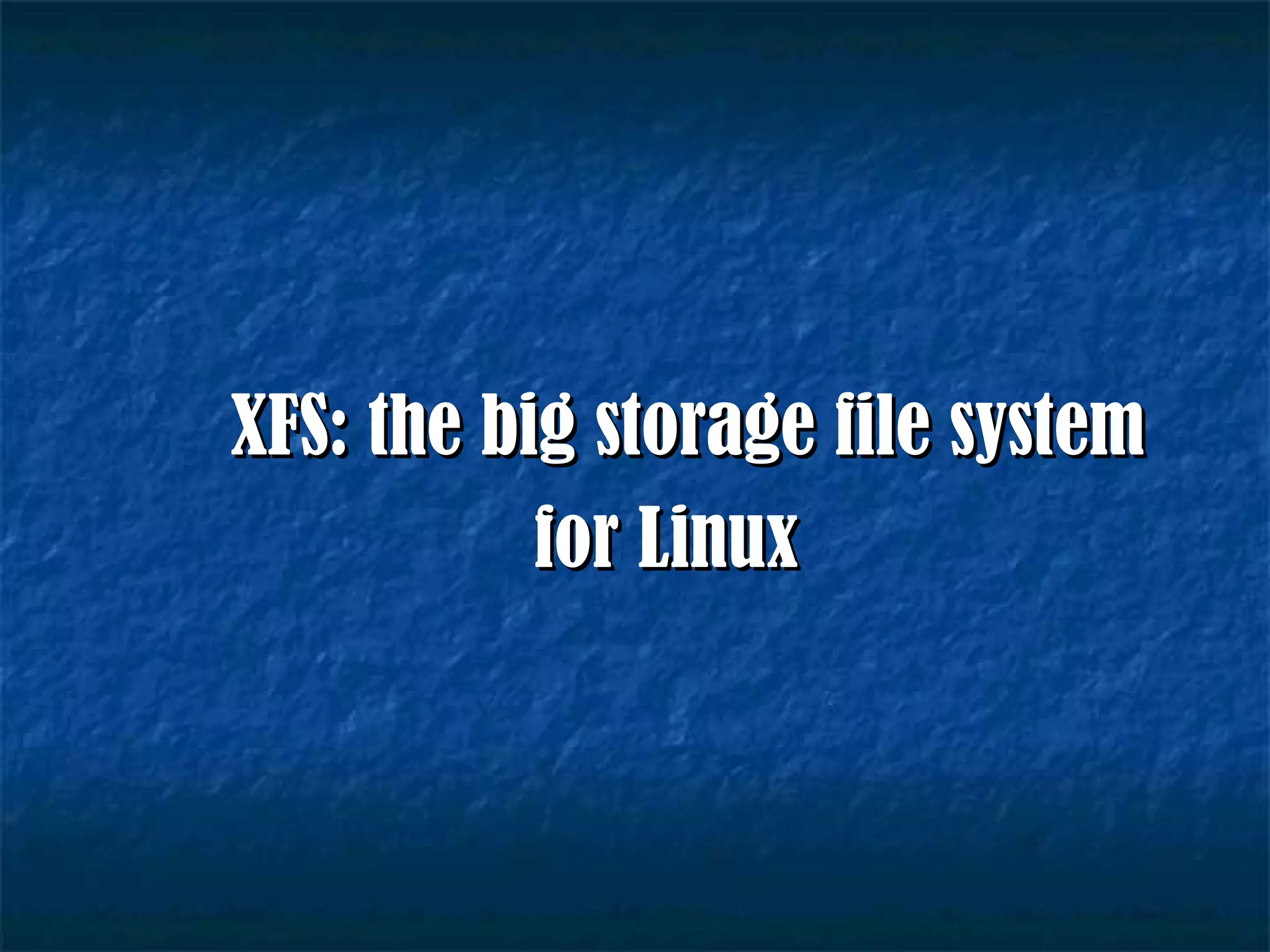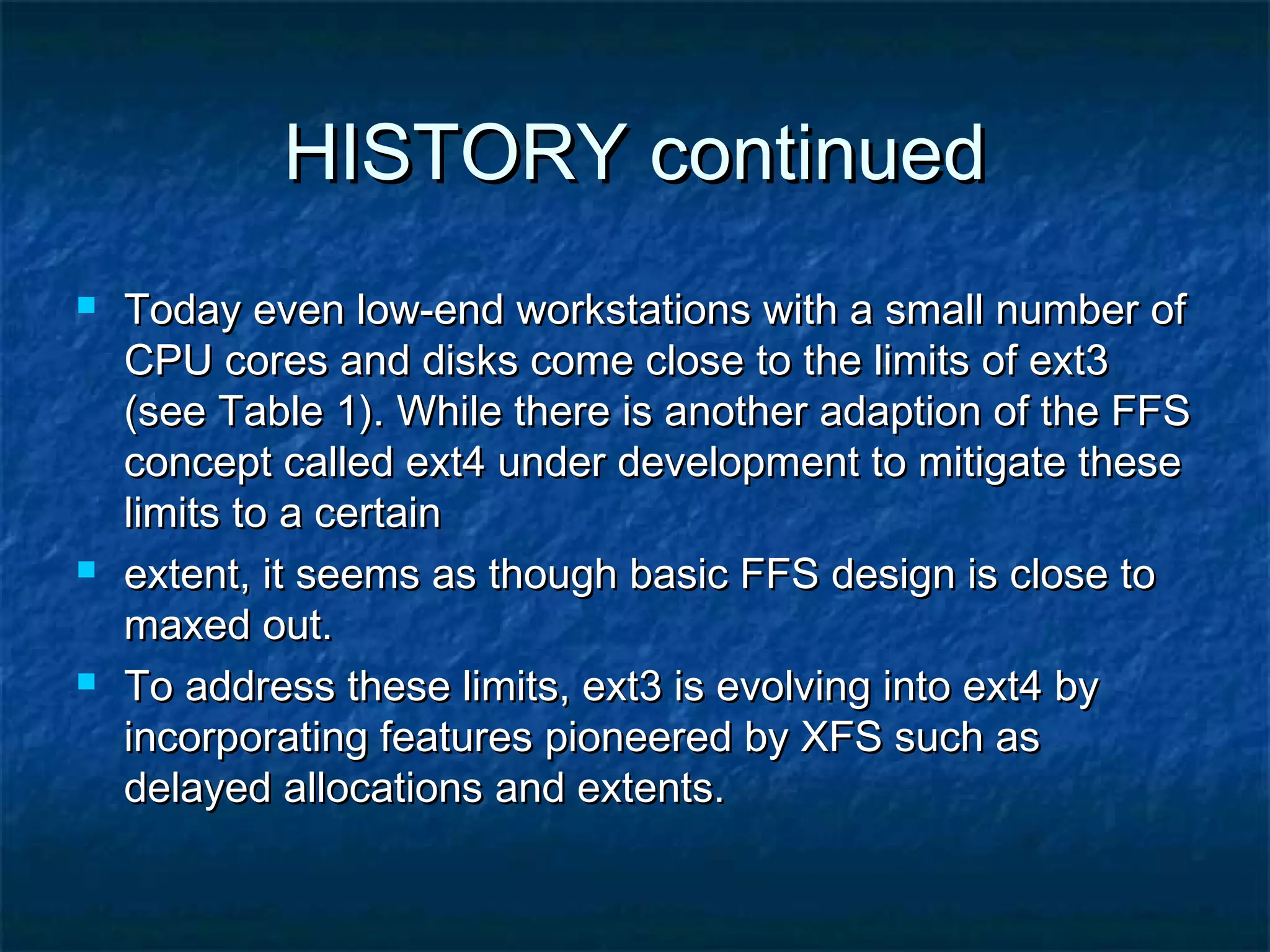XFS is a file system designed for large storage needs and high performance. It supports large files and directories through its use of extents to track file data locations. XFS provides features like dynamic inode allocation, extended attributes, disk quotas, and crash recovery through write-ahead logging to enable quick recovery of metadata after an unclean shutdown.


















![DISADVANTAGESDISADVANTAGES
• An XFS file system cannot be shrunk, which would be useful, forAn XFS file system cannot be shrunk, which would be useful, for
example, in some virtualized environments.example, in some virtualized environments.
• Metadata operations in XFS have historically been slower than withMetadata operations in XFS have historically been slower than with
other file systems, resulting in, for example, poor performance withother file systems, resulting in, for example, poor performance with
operations such as deletions of large numbers of files. However, aoperations such as deletions of large numbers of files. However, a
new XFS feature implemented by Dave Chinner and callednew XFS feature implemented by Dave Chinner and called delayeddelayed
logginglogging, available since version 2.6.39 of the Linux kernel mainline,, available since version 2.6.39 of the Linux kernel mainline,
is claimed to resolve this;is claimed to resolve this;[22][22]
performance benchmarks done by theperformance benchmarks done by the
developer in 2010 revealed performance levels to be similar to ext4developer in 2010 revealed performance levels to be similar to ext4
at low thread counts, and superior at high thread counts.at low thread counts, and superior at high thread counts.[23][23]
• No support for transparent data compressionNo support for transparent data compression](https://image.slidesharecdn.com/xfsfilesystemforlinux-151107095410-lva1-app6891/75/Xfs-file-system-for-linux-19-2048.jpg)
